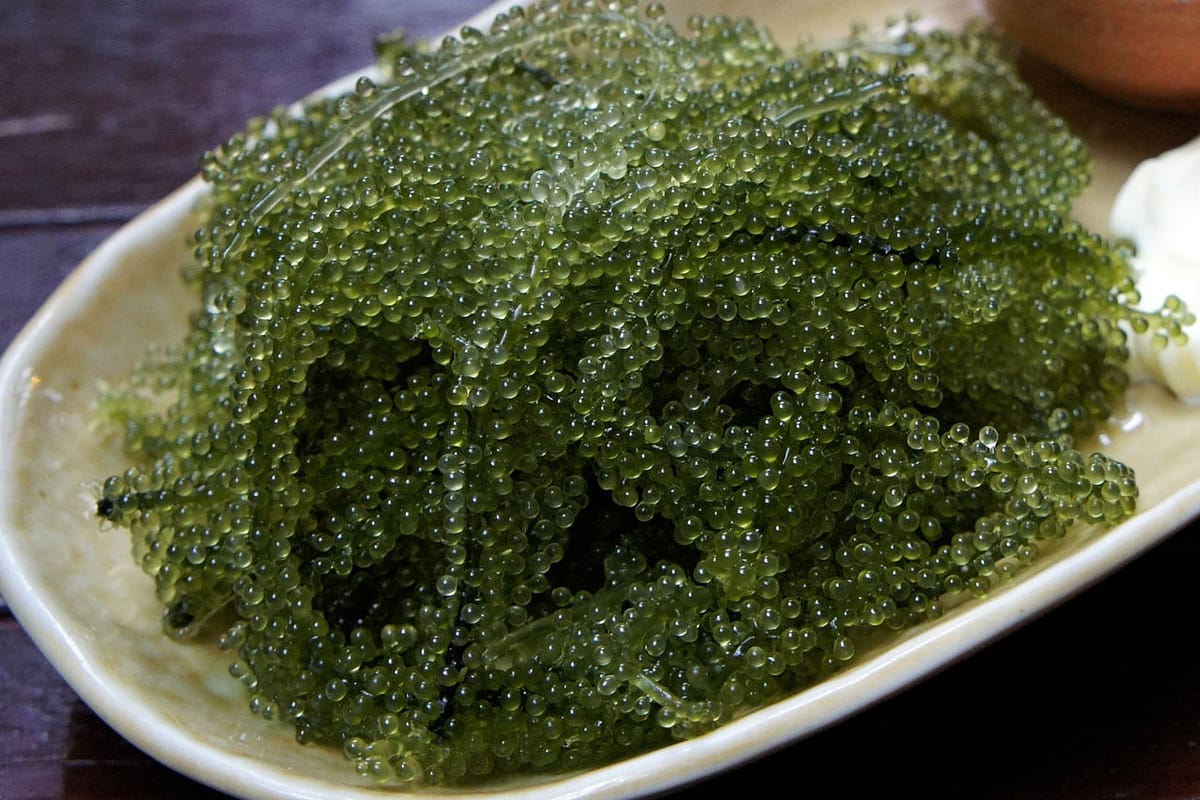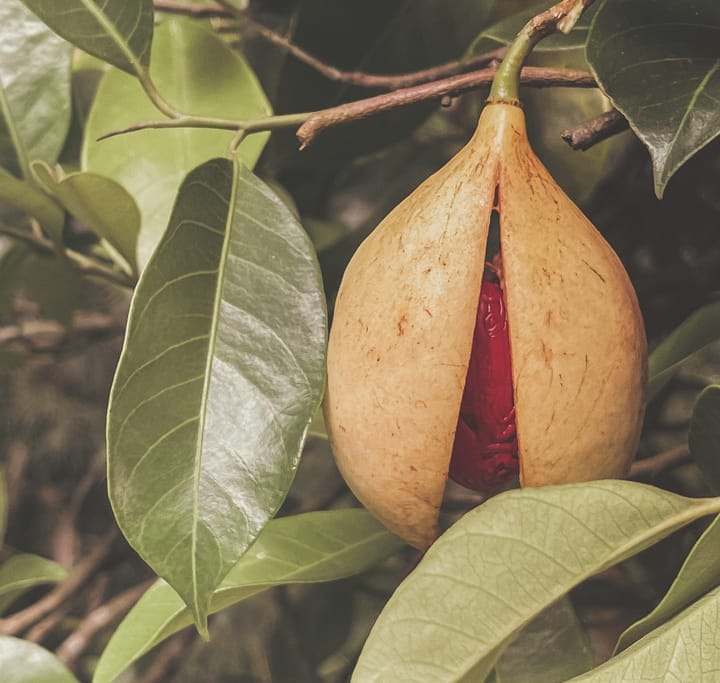Sea Grapes: Why Green Caviar Commands Premium Prices Worldwide
Discover why sea grapes (green caviar) are one of the ocean's most expensive delicacies. Learn about their unique popping texture, fascinating cultivation process, and impressive nutritional benefits.

Picture walking along a pristine coastline and discovering clusters of tiny, translucent green spheres that look like miniature grapes growing underwater.
These fascinating marine delicacies, known as sea grapes, green caviar, or by their Japanese name "umibudo," are creating quite a splash in international cuisine.
While they might seem exotic to many Western diners, these ocean gems have been treasured in Asian and Pacific Island cultures for centuries, and they're now making their way onto plates in high-end restaurants around the globe.
Understanding Sea Grapes
Sea grapes, scientifically known as Caulerpa lentillifera, are actually a type of edible seaweed, not fruit at all.
They belong to a unique group of algae that grow in warm, shallow coastal waters throughout the Indo-Pacific region, particularly in places like Okinawa, the Philippines, Vietnam, and Malaysia.

The name comes from their uncanny resemblance to tiny clusters of green grapes, with each strand consisting of a central stem with small, round vesicles attached.
What makes sea grapes particularly fascinating from a biological standpoint is that the entire organism is actually just one giant cell with multiple nuclei.
This makes them one of the largest single-celled organisms on Earth – a fact that often surprises people when they first learn about these marine marvels.
These vesicles are filled with seawater, which creates their signature texture and oceanic flavor.
The Sensory Experience of Eating Sea Grapes
The eating experience of sea grapes is unlike anything else you'll find in the ocean or on land.
When you bite into these little spheres, they create a delightful "pop" sensation in your mouth, similar to caviar but with a completely different flavor profile.
The taste is refreshingly oceanic – imagine the essence of clean seawater with a subtle umami undertone.
There's a slight saltiness that isn't overpowering, paired with an almost mineral-like freshness that reminds you of a sea breeze.
In Japanese cuisine, umibudo is often served simply – either on its own as a palate cleanser or lightly dressed with ponzu sauce.
The simplicity of preparation allows the natural flavors and textures to take center stage. Some chefs describe eating sea grapes as "tasting the ocean in its purest form."
The Complex Process of Cultivating Sea Grapes
Understanding how sea grapes are grown helps explain both their unique characteristics and their hefty price tag.
The cultivation process is a delicate balance that has been refined over generations, particularly in Okinawa, Japan, where sea grape farming has become a sophisticated industry.
Sea grape cultivation begins in controlled marine environments – specialized sea farms that recreate ideal conditions.
Farmers start with small fragments of mature sea grapes, which they attach to nets or ropes suspended in shallow seawater pools.
The water temperature must be maintained between 77-86°F year-round, and salinity levels need to match natural seawater perfectly. Even slight variations can affect the size and quality of the grape-like vesicles.
What's particularly interesting is the role of water movement. Gentle currents are essential for development, helping the sea grapes develop their characteristic round shape.
In cultivation pools, farmers use pumps to create artificial currents that mimic natural ocean movement.
The growth cycle is remarkably fast – under optimal conditions, sea grapes can be ready for harvest in just 30-45 days.
However, harvesting requires skilled workers who must carefully examine and cut each strand by hand, ensuring enough base remains for regeneration.
Remarkable Facts About These Marine Organisms
The world of sea grapes is full of surprising details. For instance, they have a remarkable ability to regenerate – if cut properly, a strand will regrow completely within weeks.
This regenerative ability has made them a symbol of resilience in Okinawan culture, where elderly residents often credit sea grapes as one of the secrets to their remarkable longevity.
Here's something mind-blowing: sea grapes can actually "sleep." Researchers have observed that these algae follow a circadian rhythm, with their photosynthetic activity changing throughout the day.
At night, the vesicles often appear slightly deflated, then plump up again as the sun rises.
They also have a natural defense mechanism – when detecting threats, they can release compounds that make them less palatable.
Scientists have discovered that sea grapes can help combat ocean acidification in their immediate environment.
As they photosynthesize, they remove carbon dioxide from the water, creating small zones of more alkaline water around them.
Additionally, they contain caulerpin, a unique chemical that has shown potential anti-inflammatory and antimicrobial properties in laboratory studies.
Why Sea Grapes Command Such High Prices
Fresh sea grapes in United States markets can cost anywhere from $30 to $60 per pound, with premium varieties reaching even higher.
This high price stems from several factors. First, there's the challenge of transportation – sea grapes have a shelf life of only 3-5 days when fresh and require specific temperature and humidity conditions.
Since they only grow in tropical waters, most markets require expensive air freight imports from Japan, the Philippines, or Vietnam.
The labor-intensive cultivation and harvesting process also adds to costs. These delicate organisms require precise environmental conditions and skilled hand-harvesting.
Each strand must be carefully selected and cut to ensure continued growth, making mass production challenging.
Nutritional Value That Justifies the Investment
What makes the price more palatable is the impressive nutritional profile. Sea grapes are rich in minerals like iodine, magnesium, calcium, and potassium, plus vitamins A and C.
They're particularly notable for containing omega-3 fatty acids, specifically EPA, which is unusual for a plant-based food. This makes them excellent for vegetarians and vegans seeking these nutrients.
The Growing Global Market for Sea Grapes
Despite high prices, global demand is steadily increasing. The rise of Japanese restaurants worldwide, social media's influence (sea grapes are incredibly photogenic), and health-conscious consumers seeking nutrient-dense foods all drive this growth.
Some companies are exploring cultivation in new regions with suitable climates, which could eventually reduce costs.
Whether you call them sea grapes, green caviar, or umibudo, these little ocean pearls offer a truly unique culinary experience.
As supply chains improve and cultivation expands to new regions, we may see prices become more accessible.
Until then, they remain a special treat – a reminder that some of the most extraordinary foods come from the most unexpected places beneath the waves.


